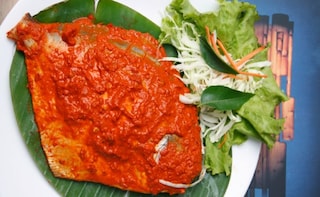When I was a little girl, as a special treat, my dad used to bring home wrapped parcels of fish and chicken. Inside were spicy, steaming hot slices of pomfret, slathered in a ruddy masala, over which were sprinkled fresh, green, chopped coriander. The shopkeeper called this concoction Fish Koliwada and I was rather fond of it. But, "it is not even remotely Koli," says Anjali Koli. "It refers to a fried fish dish churned up as an appetiser by an enterprising Punjabi/ Sadarji in a tiny eatery in Sion Koliwada." Oh well.Anjali Koli should know. She is a popular Koli food blogger and runs annaparabrahma.com from which she sells Koli masala, pickle, regional Maharashtrianmasalas and some traditional kitchen tools. I spoke to her in order to glean a little insight into her community's eating habits.
Advertisement
Advertisement
Advertisement
For the latest food news, health tips and recipes, like us on Facebook or follow us on Twitter and YouTube.
Advertisement
